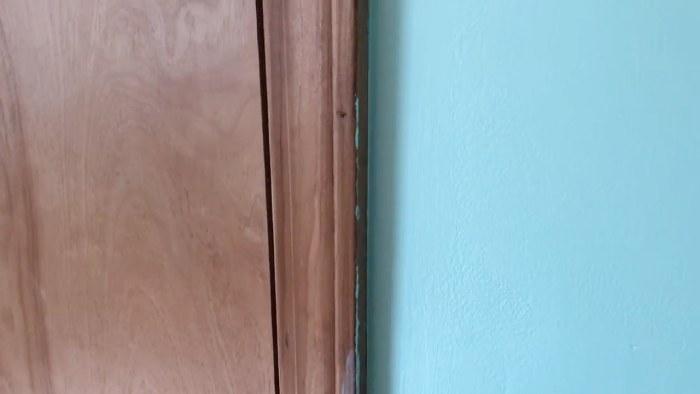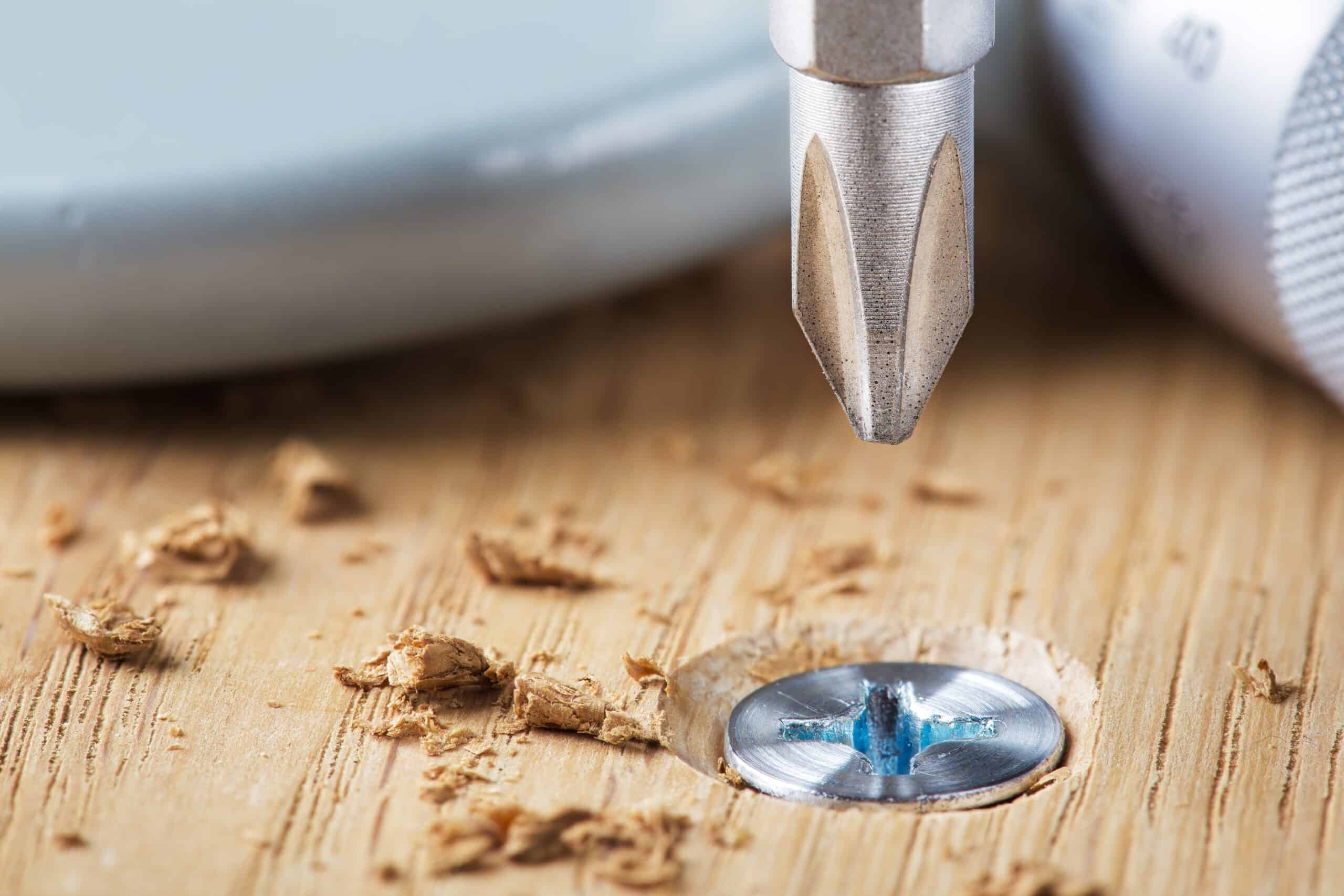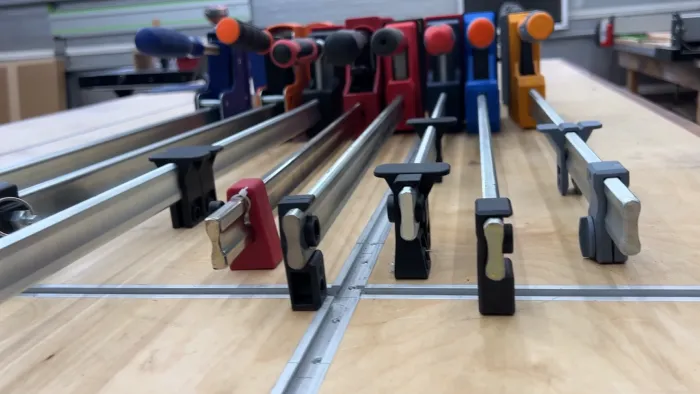WoodenuKnow.com is a participant in the Amazon Services LLC Associates Program, an affiliate advertising program designed to provide a means for sites to earn advertising fees by advertising and linking to Amazon.com and may earn from qualifying purchases.
Keeping your wood trim looking fresh and clean doesn’t have to be a stressful endeavor. Whether it’s paint splatter woes or unforeseen blemishes, you can confidently restore the original beauty of your wood trim in no time at all.
From calm solutions such as scrapers and rubbing alcohol to more severe forms of cleaning like sanding and heating, there are ten easy steps you can use to take back your pristine trim.
You’ll also want to avoid future issues by taking preventative measures like using painter’s tape before painting begins.
Don’t let splattered paint ruin the elegance of your woodwork any longer. Let’s explore how to put the fresh back in your wood surface without stripping away its charm.
How to Know Which Type of Paint Spills On Wood Trim Before Removing?
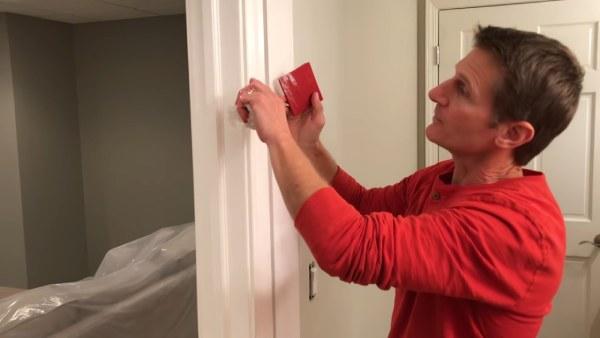
Knowing what type of paint has spilled on the wood trim is essential before removing it. Different kinds of paint need different methods for removal so that the wood doesn’t get damaged. Usually, latex or oil-based paints are used, but some fancier paints might be too.
To figure out if that old drip is made of latex, try rubbing a cotton ball with denatured alcohol on it. If you see some color on the cotton ball, then it’s probably latex.
Acrylic or oil paints will not come off when rubbed with a wet cotton ball. They may be identified by checking for a glossy finish on the surface of the wood trim.
How to Remove Paint Splatter from Wood Trim: 10 Easy Ways
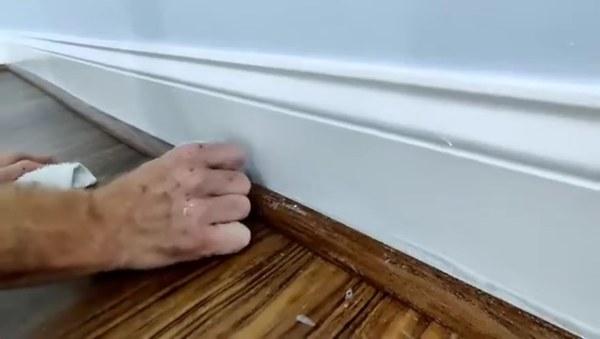
Removing paint splashes from wood trim can be an arduous and time-consuming task. However, with some patience and the right tools, it is possible to get your wood trim looking as good as new.
Method 1. Paint Scraper:
Get your wood trim looking pristine again with the right approach to paint removal. A scraper is an indispensable tool for quickly tackling messes and making any project look like a masterpiece.
Step 1: Select an appropriate tool for the job such as a plastic putty knife, butter knife, or credit card.
Step 2: Carefully insert the tool into the crevices of the wood trim to scrape away any loose paint. Be sure to use a gentle motion so as not to gouge or scratch the surface of the wood.
Step 3: Use a stain marker to cover up any scratches that may have occurred while you were cleaning the area.
Method 2. Mineral Spirits for Oil-based Paint:
Removing oil-based paints from wood trim can be challenging without the right products or techniques. Using mineral spirits or non-solvent-based cleanser effectively eliminates splattered paints without damaging the surface of your wooden trim.
Step One: Dampen a cotton swab with mineral spirits and let it sit for around 20 minutes. Then dab it directly onto the dried acrylic paint splatter on your wood trim.
The mineral spirits should help to soften or dissolve some of the hardened material, allowing you to wipe it away easily with a soft cloth or paper towel afterward.
Step Two: If any residue remains after using mineral spirits, dampen a clean rag with warm water. Then, gently scrub at it until all traces of oil based paint are gone from the wood trim surface.
It may take several applications of warm water before all stains are fully removed, so continue cleaning until no evidence remains on your wooden trim work.
Step Three: Finish up by drying off any excess moisture that may remain on your wood surface once complete. This will help protect against warping and discoloration caused by prolonged contact with moisture.
Step Four: If any scratches have been made on your trim’s surface due to cleaning efforts, cover them up with a stain marker.
Method 3. Vinegar:
Removing paint splatter from wood trim is an important task to keep your home looking neat and clean. An effective way to do this is by using vinegar, hot water, and a paste made from the two ingredients.
Step 1. Mix equal parts white vinegar and hot water together in a bowl or container until they form a paste.
Step 2. Apply the paste liberally to the paint splatter on the wood trim and let it sit for 10 or 15 minutes.
Step 3. Once the paste has had time to set, use a damp rag to wipe away any remaining paint and paste residue from the wood trim surface.
Step 4. Rinse off any excess residue with clean water and allow it to dry completely before touching or repainting the wood trim area.
Method 4. Soapy Water for Latex Paint:
Another method of removing old paint splatter from wood trim uses soapy water and a damp rag. This approach is especially effective for latex paints and other water-based products that tend to remain on surfaces after application.
Step 1. Begin by mixing dish soap with warm water until it forms a sudsy mixture in a bowl or container.
Step 2. Dip your damp rag into the soapy mixture before gently wiping away any remaining paint splatter from the wood trim surface in circular motions.
Step 3. Use additional rags if necessary until all traces of water based paint are removed from the trim area without damaging any surrounding areas or surfaces during the process.
Step 4. Clean any excess residue with a clean cloth and allow it to dry completely before repainting.
Method 5. Heating:
After an unfortunate painting mishap, don’t fear. There’s a simple way to get that pesky paint splatter off wood trim: heat.
Step 1: Set the heat gun or hair dryer to warm air. Hold the gun close enough so that it is just warming up the splatters without damaging the wood trim underneath.
Step 2. After this, use a damp cloth or paper towel to gently wipe away any loose paint until all of it has been removed. You may need to repeat these steps multiple times depending on how much paint remains on the wood trim.
Method 6. Denatured Alcohol for Latex Paint:
Denatured alcohol is another useful tool when attempting to remove latex paint splatters from wood trim.
Step 1: Begin by dabbing some of this onto a microfiber rag and then wiping away any remaining paint on your trim until all traces are gone. Make sure not to use an ordinary towel or paper towel as this can cause damage or leave behind residue after being wiped away.
Step 2: Allow the denatured alcohol to sit for 10-15 minutes before proceeding further so it has enough time to dissolve and loosen the remaining paint particles.
Step 3: Once complete, clean off any excess with warm water.
Step 4: Finish off with some wood wax or mask any discoloration that may have been left behind with a stain marker.
Method 7. Rubbing Alcohol:
Removing paint splatter from wood trim using rubbing alcohol is an important task, as it can make a big difference in the look of your home.
Step 1: Begin by mixing ¼ cup of lemon juice and ¾ cup of rubbing alcohol into a small container.
Step 2: Then, use a scrub brush or toothbrush to apply the mixture to the paint splatter.
Step 3: Let it sit for around 10 minutes before wiping it away with a clean paper towel.
Method 8: Chemical Paint Stripper:
A chemical paint remover is an essential tool when trying to remove old paint splatters on wood trim.
Step 1: Start by dabbing the product onto the affected area and then let it sit per instructions on the product label.
Step 2: Once dry, wipe off with a rag and then follow up with a damp cloth to clean any leftover residue.
Method 9: Sanding:
Step 1: Sanding down wood trim that has been affected by paint splatter is another effective way to rid your home of unwanted residue.
Step 2: Gently sand over the affected area using either a power sander, a sanding block, or a super-fine grit sandpaper. Be careful not to press too hard or scratch the surface beneath.
Step 3: If scratches are left behind, consider using a stain remover to bring back its original look.
Method 10: WD 40 Lubricant:
WD 40 lubricant is another effective way of removing paint splatter from wood trim. It breaks up adhesive bonds that hold onto layers of dried-on paints on surfaces.
Step 1: Spray some WD 40 lubricant generously onto the stained area so that it completely covers the splattered area.
Step 2: Leave it for a few minutes so that it can break down any adhesive bonds between layers of dried-on paint before attempting removal.
Step 3: Once done, use a cotton rag to wipe away any excess paint remnants left behind. Clean off any remaining residues with clean water.
How to Prevent Paint Splatter on Wood Trim?
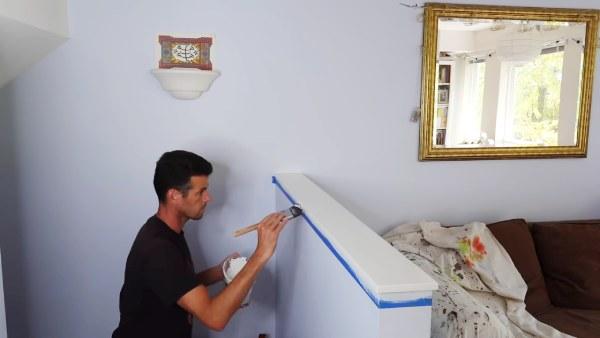
Take the necessary precautions when painting wood trim to prevent splatter. One of the best ways to do this is to use Painter’s Tape, a product specifically designed for this purpose.
Painter’s Tap covers the trim with a thin film that catches any paint droplets before they can settle and dry on the surface. It is essential to clean up any paint spills immediately after they occur to avoid further damage or discoloration on the wood trim.
When applying paint, use thin coats instead of thick ones, as this will help reduce the amount of splatter produced by the brush or roller. Using a higher quality brush or roller can also be beneficial as it will make applying even coats of paint easier without creating too much splatter.
Easily Remove Paint Splatter From Wood Trim Without Causing Any Damage
With ten different ways of tackling paint splatters on wood trim, you’re guaranteed to find something that works for you.
Need something quick and easy? Grab a scraper and some mineral spirits. Looking for more involved methods? Try out special products or give sanding a shot.
There’s no need to worry about what type or how old the paint is. There’s an option available regardless. So, if you’ve been looking for the perfect way to rid your home of unwanted paint splatters, now you know.

